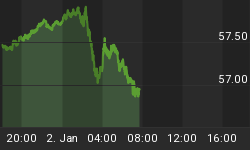10/27/2010 8:58:10 AM
We prefer to trade the equities markets based on their behavior but the behavior of equities traders seems to rely almost solely on an inverse correlation to the U.S. dollar...
Recommendation:
Take no action.
Daily Trend Indications:

- Positions indicated as Green are Long positions and those indicated as Red are short positions.
- The State of the Market is used to determine how you should trade. A trending market can ignore support and resistance levels and maintain its direction longer than most traders think it will.
- The BIAS is used to determine how aggressive or defensive you should be with a position. If the BIAS is Bullish but the market is in a Trading state, you might enter a short trade to take advantage of a reversal off of resistance. The BIAS tells you to exit that trade on "weaker" signals than you might otherwise trade on as the market is predisposed to move in the direction of BIAS.
- At Risk is generally neutral represented by "-". When it is "Bullish" or "Bearish" it warns of a potential change in the BIAS.
- The Moving Averages are noted as they are important signposts used by the Chartists community in determining the relative health of the markets.
Current ETF positions are:
Short DIA at $108.57
Short QQQQ at $49.66
Short SPY at $114.82
Daily Trading Action
The major index ETFs opened lower and tested lower for the first ten minutes. Another five minutes passed with choppy trading and the bulls took over. The buying interest continued almost without challenge until short after 1:00pm when the bears made their last effort to take the major indexes lower. That effort failed and the bulls began marching the market higher by 2:00pm. Although there was some selling in the final forty-five minutes as the bears rejected wholesale higher prices, the major indexes closed in positive territory, even if by a narrow margin. The Russell-2000 (IWM 70.69 -0.05) posted a small loss as did the Semiconductor Index (SOX 359.36 -1.42). The bank indexes made modest gains with the Bank Index (KBE 22.63 +0.03) edging into positive territory and the Regional Bank Index (KRE 22.89 +0.09) gaining most of one half of one percent. The 20+ Yr Bonds (TLT 100.10 -1.57) was, by far, the biggest mover losing one and one half percent on the session and making a new recent closing low. NYSE volume was light with 963M shares traded. NASDAQ volume was below average with 1.937B shares traded.
There were three economic reports of interest released:
- Case-Shiller 20-city Index (Aug) rose +1.7% versus an expected rise of +2.1%
- Consumer Confidence (Oct) rose to 50.2 versus an expected rise to 49.0
- FHFA Home Price Index (Aug) rose +0.4%
The first report was released a half hour before the bell while the other two reports were released a half hour into the session.
The U.S. dollar closed +0.7% higher for the day. We prefer to trade the equities markets based on their behavior but the behavior of equities traders seems to rely almost solely on an inverse correlation to the U.S. dollar. With that said, there really isn't an argument to be made to trade equities independent of the inverse relationship to the dollar until that correlation is broken. This inverse correlation is at about 80%. Monday, investors chose to ignore the higher dollar and bought the major indexes up to support a positive close but not much more than that.
Five out of ten economic sectors in the S&P-500 moved higher led by Consumer Discretionary (+0.4%). Consumer Staples (-0.4%), Healthcare (-0.3%), Industrials (-0.3%), Materials (-0.2%), and Utilities (-0.2%) moved lower.
Implied volatility for the S&P-500 (VIX 20.22 +0.37) rose most of two percent and the implied volatility for the NASDAQ-100 (VXN 21.81 +0.33) rose one and one half percent. While these rose modestly, their closing values are lower than their gap up opens when the market opened lower. Complacency is yielding to concern here.
The yield for the 10-year note rose eight basis points to close at 2.64. The price of the near term futures contract for a barrel of crude oil closed nearly unchanged rising just three cents to close at $82.55.
Market internals were mixed with decliners leading advancers 5:4 on the NYSE and by a few percent on the NASDAQ. Down volume edged up volume on the NYSE while up volume led down 5:4 on the NASDAQ. The index put/call ratio rose 0.25 to close at 1.70. The equity put/call ratio fell -0.03 to close at 0.60. Once again, we see professionals behaving differently than retail investors with professionals hedging significantly against potential downside.
Commentary:
Tuesday's trading action showed that the bulls are still willing to support equities but are having a tough go with the bears standing ready to sell into the buying. The bulls were even willing to buy with a higher dollar which we find suspect, given the 80% inverse correlation. We continue to be bearish with all sorts of signs that the top is in. In fact, it appears that the positive closes were manufactured to make things look better than they are. The market internals were mostly negative.
One factor helping to support the market here is the sell-off in bonds. We identified this as the fly in the ointment of the bearish case and it proved decisive in supporting equities. We believe, however, that bonds are about to see a resurgence in buying, even if it isn't a lasting effort. This should suck funds out of equities and we may finally see the equities markets roll over.
We hope you have enjoyed this edition of the McMillan portfolio. You may send comments to mark@stockbarometer.com.
















